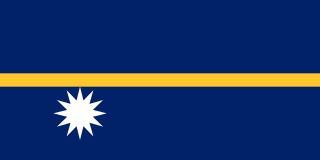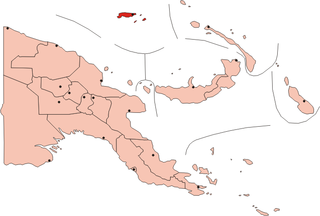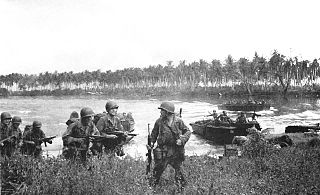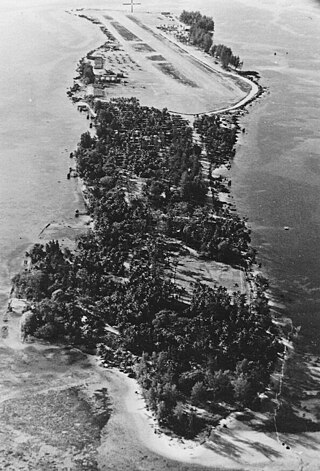Related Research Articles

The Canary Islands, also known informally as the Canaries, are a Spanish region, autonomous community and archipelago in the Atlantic Ocean. At their closest point to the African mainland, they are 100 kilometres west of Morocco and the Western Sahara. They are the southernmost of the autonomous communities of Spain. The islands have a population of 2.2 million people and are the most populous special territory of the European Union.

Mauritius, officially the Republic of Mauritius, is an island country in the Indian Ocean, about 2,000 kilometres off the southeastern coast of East Africa, east of Madagascar. It includes the main island, as well as Rodrigues, Agaléga, and St. Brandon. The islands of Mauritius and Rodrigues, along with nearby Réunion, are part of the Mascarene Islands. The main island of Mauritius, where the population is concentrated, hosts the capital and largest city, Port Louis. The country spans 2,040 square kilometres (790 sq mi) and has an exclusive economic zone covering 2,300,000 square kilometres.

Madeira, officially the Autonomous Region of Madeira, is an autonomous region of Portugal. It is an archipelago situated in the North Atlantic Ocean, in the region of Macaronesia, just under 400 kilometres (250 mi) north of the Canary Islands, 520 kilometres (320 mi) west of the Kingdom of Morocco and 805 kilometres (500 mi) southwest of mainland Portugal. Madeira sits on the African Tectonic Plate, although it is culturally, politically and ethnically associated with Europe, with its population predominantly descended from Portuguese settlers. Its population was 251,060 in 2021. The capital of Madeira is Funchal, on the main island's south coast.

Nauru, officially the Republic of Nauru and formerly known as Pleasant Island, is an island country and microstate in Micronesia, part of the Oceania region in the Central Pacific. Its nearest neighbour is Banaba of Kiribati about 300 km (190 mi) to the east.

Oceania is a geographical region including Australasia, Melanesia, Micronesia, and Polynesia. Outside of the English-speaking world, Oceania is generally considered a continent, while Australia is regarded as a country which contains the continental mainland of that continent. Spanning the Eastern and Western hemispheres, at the centre of the water hemisphere, Oceania is estimated to have a land area of about 9,000,000 square kilometres (3,500,000 sq mi) and a population of around 44.4 million as of 2022. Oceania is the smallest continent in land area and the second-least populated after Antarctica.

Rhode Island is a state in the New England region of the Northeastern United States. It borders Connecticut to its west; Massachusetts to its north and east; and the Atlantic Ocean to its south via Rhode Island Sound and Block Island Sound; and shares a small maritime border with New York, east of Long Island. Rhode Island is the smallest U.S. state by area and the seventh-least populous, with slightly fewer than 1.1 million residents as of 2020; but it has grown at every decennial count since 1790 and is the second-most densely populated state, after New Jersey. The state takes its name from the eponymous island, though nearly all its land area is on the mainland. Providence is its capital and most populous city.

The United States Virgin Islands, officially the Virgin Islands of the United States, are a group of Caribbean islands and a territory of the United States. The islands are geographically part of the Virgin Islands archipelago and are located in the Leeward Islands of the Lesser Antilles. The islands have a tropical climate.

Easter Island is an island and special territory of Chile in the southeastern Pacific Ocean, at the southeasternmost point of the Polynesian Triangle in Oceania. The island is renowned for its nearly 1,000 extant monumental statues, called moai, which were created by the early Rapa Nui people. In 1995, UNESCO named Easter Island a World Heritage Site, with much of the island protected within Rapa Nui National Park.

The Admiralty Islands are an archipelago group of 40 islands in the Bismarck Archipelago, to the north of New Guinea in the South Pacific Ocean. These are also sometimes called the Manus Islands, after the largest island.

Territories of the United States are sub-national administrative divisions overseen by the federal government of the United States. The American territories differ from the U.S. states and Indian reservations as they are not sovereign entities. In contrast, each state has a sovereignty separate from that of the federal government and each federally recognized Native American tribe possesses limited tribal sovereignty as a "dependent sovereign nation". Territories are classified by incorporation and whether they have an "organized" government through an organic act passed by the Congress. American territories are under American sovereignty and may be treated as part of the U.S. proper in some ways and not others. Unincorporated territories in particular are not considered to be integral parts of the U.S., and the U.S. Constitution applies only partially in those territories.
The Manus languages are a subgroup of about two dozen Oceanic languages located on Manus Island and nearby offshore islands in Manus Province of Papua New Guinea. The exact number of languages is difficult to determine because they form a dialect continuum. The name Manus originally designated an ethnic group whose members spoke closely related languages and whose coastal dwellers tended to build their houses on stilts out over the sea.

USS Gillespie (DD-609) was a Benson-class destroyer in the United States Navy during World War II. She was named for Major Archibald H. Gillespie.

The Admiralty Islands campaign was a series of battles in the New Guinea campaign of World War II in which the United States Army's 1st Cavalry Division took the Japanese-held Admiralty Islands.

USS Oyster Bay (AGP-6), originally and later AVP-28, was a United States Navy motor torpedo boat tender in commission from 1943 to 1946. She saw service in World War II.

The Faroe or Faeroe Islands, or simply the Faroes, are an archipelago in the North Atlantic Ocean and an autonomous territory of the Kingdom of Denmark. The official language of the country is Faroese, which is closely related to and partially mutually intelligible with Icelandic.

Pityilu Island is part of Manus Province in northern Papua New Guinea and part of the Admiralty Islands. It is off the northern coast of Manus Island and is nearly 4.8 km long and varies in width from 76 to 198 metres.

VP-6 was a long-lived Patrol Squadron of the U.S. Navy, nicknamed the Blue Sharks. Originally established as Bombing Squadron VB-146 on 15 July 1943, it was redesignated Patrol Bombing Squadron VPB-146 on 1 October 1944, redesignated VP-146 on 15 May 1946, redesignated Medium Patrol Squadron (Landplane) VP-ML-6 on 15 November 1946, redesignated VP-6 on 1 September 1948 and disestablished on 31 May 1993. It was the third squadron to be designated VP-6, the first VP-6 was disestablished on 3 May 1926 and the second VP-6 was disestablished on 20 June 1945.

Ponam Island is located off the north coast of Manus Island in Papua New Guinea.

HMS Nabaron was a Royal Navy (RN) Mobile Operational Naval Air Base (MONAB) which was situated at the United States Navy (USN) airfield NAS Ponam Airfield on Ponam Island, Admiralty Islands in Papua New Guinea, which had been transferred to RN on loan. HMS Nabaron was also known as MONAB IV and Royal Naval Air Station Ponam.
References
- ↑ Leipon at Ethnologue (18th ed., 2015) (subscription required)